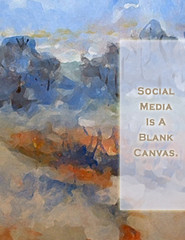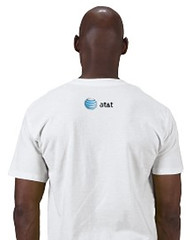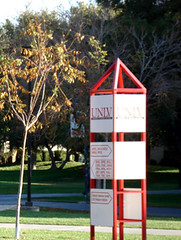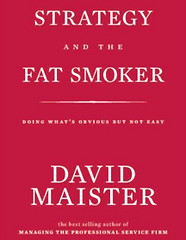While listening to a panel discussion called “Being Opinionated in America” from the University of Berkeley that featured Maureen Dowd and Thomas L. Friedman (available for free download at iTunes), I noted that Friedman was particularly transparent in his approach to writing foreign affairs columns for The New York Times.
Five Points Gleaned From Thomas L. Friedman
• Writes fact-based commentaries that are reasonably objective
• Does not write to make friends and not doing so has no impact
• Consults with a brain trust of five people; reasonably transparent
• Fact checks for accuracy; seeks outside sources; no oversight
• Does not discriminate between the level of expertise and value of the insight
In drawing comparisons between his approach and that of bloggers, there seem to be some relatively minor distinctions, with most depending on the specific blogger.
Five Common Distinctions With Bloggers
• Some bloggers do write fact-based commentary, but most advocate specific ideas and share or debate points around their area of interest.
• Most bloggers do write to make friends, because nurturing these relationships can potentially increase their presence, reach, and perception of expertise.
• Some bloggers are influenced by select influencers, and the level of transparency is as varied as columnists. Some bloggers are also influenced by others who they never mention.
• Most bloggers do not fact check for accuracy or seek additional sources beyond what they can find available on the Web.
• Many bloggers do discriminate between the level of expertise and value of insights, often giving more weight to those who have a perceived expertise.
From me, these distinctions are especially important when considering the continuous debate whether bloggers can be journalists. I generally feel it truly depends on the blogger, always noting that some journalists are bloggers too (blogging is activity, not usually a professional designation). And, of course, many bloggers have no interest in becoming journalistic, which is fine too.
However, I do believe that bloggers can strengthen their content by adopting some journalistic approaches as outlined by Friedman.
• Never be afraid to seek offline sources to enhance the quality of the content; it’s often refreshing to read blogs that bring in ideas from non-bloggers.
• Never underestimate the value of any insight, regardless of the perceived level of expertise. Experts have an equal opportunity to be wrong.
• Authenticity is more important than transparency; meaning that disclosure is most warranted when it is relevant or directly influences the piece.
• And always be careful in pursuing online friendships for popularity so that these relationships do not hinder your ability to be honest with yourself and your readers.
The last point is often the most difficult for bloggers. For example, I generally encourage disagreement and debate while discouraging the shouting down of opposing viewpoints or diatribe, as sometimes happens when people support popularity over purpose.
I appreciate it sometimes sizes me up as someone who doesn’t much care what people think. At least that is what one of my friends told me last week. But that isn’t exactly so. I care wholeheartedly what people think; I just don’t always care a whole lot about what they might think of me for a certain point of view or working to remain objective.
There’s a big difference. In fact, it provides columnists like Dowd and Friedman the voice they need to make people think through issues without polarizing them along party platforms. Sometimes, this comes at the expense of their own popularity, if not, likeability. And personally, it’s something I hope to see more of in new media.
After all, the true test of any relationship is never when we agree, but when we disagree. Yes, we need some more of that in social media.

Five Points Gleaned From Thomas L. Friedman
• Writes fact-based commentaries that are reasonably objective
• Does not write to make friends and not doing so has no impact
• Consults with a brain trust of five people; reasonably transparent
• Fact checks for accuracy; seeks outside sources; no oversight
• Does not discriminate between the level of expertise and value of the insight
In drawing comparisons between his approach and that of bloggers, there seem to be some relatively minor distinctions, with most depending on the specific blogger.
Five Common Distinctions With Bloggers
• Some bloggers do write fact-based commentary, but most advocate specific ideas and share or debate points around their area of interest.
• Most bloggers do write to make friends, because nurturing these relationships can potentially increase their presence, reach, and perception of expertise.
• Some bloggers are influenced by select influencers, and the level of transparency is as varied as columnists. Some bloggers are also influenced by others who they never mention.
• Most bloggers do not fact check for accuracy or seek additional sources beyond what they can find available on the Web.
• Many bloggers do discriminate between the level of expertise and value of insights, often giving more weight to those who have a perceived expertise.
From me, these distinctions are especially important when considering the continuous debate whether bloggers can be journalists. I generally feel it truly depends on the blogger, always noting that some journalists are bloggers too (blogging is activity, not usually a professional designation). And, of course, many bloggers have no interest in becoming journalistic, which is fine too.
However, I do believe that bloggers can strengthen their content by adopting some journalistic approaches as outlined by Friedman.
• Never be afraid to seek offline sources to enhance the quality of the content; it’s often refreshing to read blogs that bring in ideas from non-bloggers.
• Never underestimate the value of any insight, regardless of the perceived level of expertise. Experts have an equal opportunity to be wrong.
• Authenticity is more important than transparency; meaning that disclosure is most warranted when it is relevant or directly influences the piece.
• And always be careful in pursuing online friendships for popularity so that these relationships do not hinder your ability to be honest with yourself and your readers.
The last point is often the most difficult for bloggers. For example, I generally encourage disagreement and debate while discouraging the shouting down of opposing viewpoints or diatribe, as sometimes happens when people support popularity over purpose.
I appreciate it sometimes sizes me up as someone who doesn’t much care what people think. At least that is what one of my friends told me last week. But that isn’t exactly so. I care wholeheartedly what people think; I just don’t always care a whole lot about what they might think of me for a certain point of view or working to remain objective.
There’s a big difference. In fact, it provides columnists like Dowd and Friedman the voice they need to make people think through issues without polarizing them along party platforms. Sometimes, this comes at the expense of their own popularity, if not, likeability. And personally, it’s something I hope to see more of in new media.
After all, the true test of any relationship is never when we agree, but when we disagree. Yes, we need some more of that in social media.





































